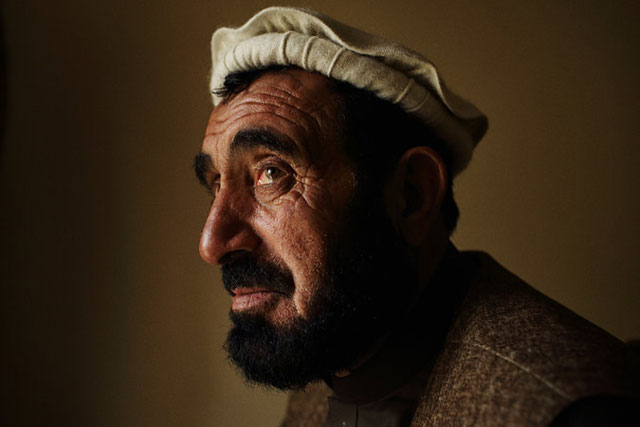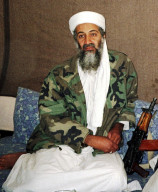
But rather than worrying about Ghalib, the Americans might have considered encouraging him. Lean and weather-beaten, he is now leading the fight against the Taliban and the Islamic State across a stretch of eastern Afghanistan.
His effectiveness has led to appointments as the Afghan government’s senior representative in some of the country’s most war-ravaged districts. Afghan and American officials alike describe him as a fiercely effective fighter against the insurgency, and the American military sometimes supports his men with airstrikes — although Ghalib complains that there are too few bombers and drones for his taste.
US transfers five Guantanamo detainees to UAE: Pentagon
Accounts of former Guantánamo detainees who went on to fight alongside the Taliban or Islamic State have become familiar. So are those of innocents swept up in the American dragnet and dumped in the prison camp without recourse or appeal. But this is a new one: the story of a man wrongly branded an enemy combatant and imprisoned in Guantánamo for nearly four years, only to emerge as a steadfast American ally on the battlefield.
At 54, Ghalib’s face is creased, and his eyes are both exhausted and watchful, as though all they really expect to see is the next bad turn that will befall his life. There have been many, including the deaths of both wives, his daughters, a sister and a grandchild at the hands of the Taliban.
“I don’t have good memories of life, to be honest,” Ghalib said.
In a recent interview in Kabul, he cataloged the enemies he has fought during a life of struggle — first the Soviets, during the war of the 1980s; then the Taliban over the next three decades; and now the Islamic State.
More slowly, he recounted the long list of relatives he lost over these decades of calamity, from a brother who died in the war against the Soviets in the 1980s to his 70-year-old brother-in-law, who was beheaded this month. The Taliban killed more than 19 relatives in all.
“Everything has been fighting and killing,” he lamented.
Now, his latest fight has even pitted him against a man he once considered a close friend: a poet named Abdul Rahim Muslim Dost, whom he lived alongside in Guantánamo.
While Ghalib chose to reject bitterness and fight on behalf of the American-backed government, his former friend Mr. Dost now leads the Islamic State fighters whom Ghalib’s forces are trying to drive out of eastern Afghanistan.
 PHOTO: NYTIMES
PHOTO: NYTIMESBut years ago, stuck in the same camp at Guantánamo, they would spend their days debating politics and religion.
Last British resident in Guantanamo Bay released: ministry
Dost, a dour but quick-witted man who was known for the poetry he etched into the side of coffee cups for lack of better writing materials, was adamant that there was only one course of action after their release: Go to Pakistan and start waging jihad. He spoke of uniting the whole Muslim world.
Ghalib had other plans. “I used to argue with them that we are Afghans and we must support Afghanistan,” he said, meaning the current, American-backed government that replaced the Taliban. It was the minority view, but he did not worry about sharing it with Dost or any of his jailed countrymen. “We were friends with each other despite our views,” he said.
At least six Pakistanis killed in clash with Taliban militants near border with Afghanistan
How Ghalib ended up in American captivity is its own bewildering story. After building a reputation as an effective commander against the Soviets and the Taliban, he became a police chief for the new Afghan government after the Taliban’s ouster in 2001. But in 2003, he was arrested after United States soldiers found explosive devices adjacent to the government compound where he worked. That was apparently close enough. There were also several letters that linked him to Taliban figures, although American officials conceded the letters might have been forged.
One of the military officers weighing the evidence against him explained that he did not “put much credibility to any of these letters,” according to a transcript of the tribunal.
That left Mr. Ghalib flummoxed. “So why are you detaining me?”
At Guantánamo, Ghalib often explained to his captors that he had been fighting the Taliban for years and had even aided American forces at Tora Bora against Al Qaeda. He recited the names of major anti-Taliban commanders who would vouch for him.
American investigators eventually concluded that the “detainee is not assessed as being a member of Al Qaeda or the Taliban,” according to a military document outlining the evidence. Yet the military nonetheless described Mr. Ghalib as “a medium risk,” noting that he could possibly become a formidable enemy given his years of experience as a combat commander — albeit on the government’s side before his detainment.
Finally, in 2007, Ghalib was released.
He left Guantánamo angry not only over the “psychological torture” the American military put him through, but also at the Afghan government for never pushing for his release, he recalled. Yet he was determined not to let the hardship of the past four years alter the course of his life.
Ghalib decided that he would be guided by “the overall pain that my people and my country are going through — that is the most important thing.”
This article originally appeared on the New York Times, a partner of The Express Tribune.



































1713853507-0/MalalaHilary-(2)1713853507-0-270x192.webp)








COMMENTS
Comments are moderated and generally will be posted if they are on-topic and not abusive.
For more information, please see our Comments FAQ